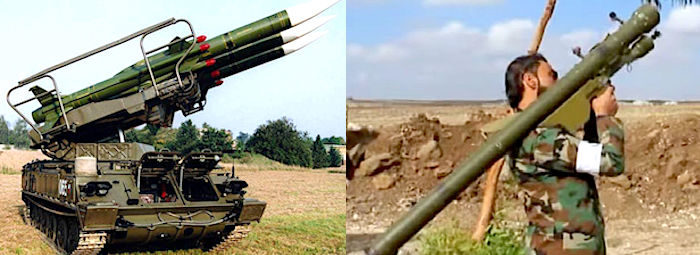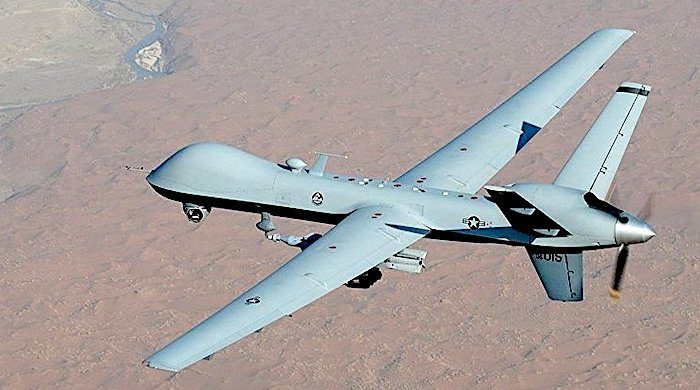"A US MQ-9 was shot down over Yemen by what we assess to be a Houthi SA-6 surface-to-air missile on June 6, 2019," said CENTCOM spokesman Lt. Col. Earl Brown in a Sunday statement. He noted the altitude of the drone "indicated an improvement over previous Houthi capability, which we assess was enabled by Iranian assistance."
Then last Thursday, there was another attempted shootdown of a US drone, this time over the Gulf of Oman by what CENTCOM says was "a modified Iranian SA-7 surface-to-air missile."
According to CENTCOM, the goal was "to disrupt surveillance of the IRGC [Iranian Revolutionary Guard Corps] attack on the M/T Kokuka Courageous. The MQ-9 had arrived minutes earlier at 6:20 a.m. local time at the motor tanker (M/T) Altair and had observed the ship on fire. The SA-7 was ineffective and its closest point of approach to the MQ-9 was approximately one kilometer," CENTCOM said.
The announcement seems to confirm unofficial reports last Friday by an unnamed US official speaking to CNN, who reported an Iranian missile shot at the Reaper drone over the Gulf of Oman the previous day.
On Thursday, two tankers in the Gulf of Oman suffered explosions. While the US was quick to suggest the damage was caused by Iranian limpet mines - a type of naval mine attached to the side of a ship by divers - the story told by the tankers' crews suggested a missile or artillery attack and not a naval mine. Likewise, the video released by CENTCOM supposedly showing Iranian sailors removing an unexploded mine from the side of the tanker during a rescue of the crew might not show a mine at all, since limpets are typically designed to explode if removed, according to the New York Times.
The US military publication Stars & Stripes floated the idea Sunday that based on CENTCOM's statement, the tanker crew could have seen a wide-flying SA-7 missile and reported that back. However, if the US MQ-9 drone was sent to monitor the situation following the explosions, then the anti-air missile shot at it couldn't have been fired before the explosions and mistaken for their cause.
Further, the type of missile fired both in the Gulf of Oman and over Yemen doesn't point to Iran, either. In fact, any number of countries could have been the origin point of the Houthi missile shot.
SA-6 is the NATO reporting name for the Soviet-built 2K12 Kub, a missile defense system mounted on a tracked vehicle that's in service since 1970. The SA-7, or 9K32 Strela-2, was the Soviets' first shoulder-mounted anti-air missile, entering service in 1968. These are not advanced systems, nor is their use indicative of any particular country's influence - dozens of countries around the world have acquired the systems, and they've appeared in even more conflicts.

Tehran has denied all responsibility for the explosions, which numerous US politicians have used to beat the drums for a US war on Iran even more. The US has already deployed an aircraft carrier battle group to the region as well as a heavy bomber task force, an amphibious landing dock and thousands of troops, allegedly to counter Iranian plans for aggressive action against US forces and their allies in the region.




Comment: The aim is to create enough validation for war - even if it means 'crying wolf', falsifying accusations or employing false-flags. In the Yemen drone attacks and the attack on Kokuka Courageous, CENTCOM is conflating multiple 'no evidence' incidents to implicate Iran and create justifiable causes for retribution, despite ongoing expertise to the contrary.